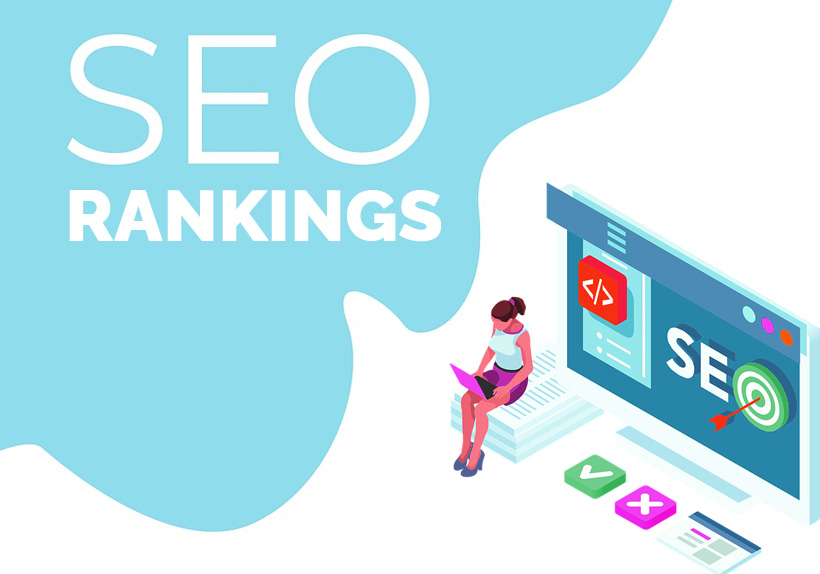8 Best Practices for Boosting Your Rankings

In today’s fast-paced digital landscape, businesses of all sizes and industries are competing for the attention of potential customers. Building an attractive and informative website with quality content is crucial, but that alone may not be enough to ensure your target audience discovers it among the vast ocean of online information. This is where the power of search engine optimization (SEO) comes into play.
By implementing intelligent SEO strategies, you can significantly improve your website’s ranking on search engine results pages (SERPs), thereby increasing visibility and attracting more organic traffic. Effective SEO practices not only help in driving potential customers to your site but also establish credibility and trust in your brand.
In this guide, we delve into several proven practices for boosting your rankings and ensuring that your website consistently outperforms competitors on SERPs. So, buckle up and get ready to embark on a journey towards improved rankings, increased visibility, and, ultimately, greater business success in the digital domain!
Build Quality Backlinks
Backlinks are considered one of the most critical factors in determining search engine rankings. Obtaining high-quality backlinks signals to search engines that your content is valuable and trustworthy. Focus on acquiring links from reputable websites within your niche through guest blogging, outreach campaigns, or by producing shareable resources, such as infographics or ebooks.
Remember that quality trumps quantity when it comes to backlinks; a few strong links from authoritative sources are better than numerous links from low-quality sites. Consider using a link-building service to help you acquire even more quality backlinks from sites within your niche. Don’t forget to organize team meetings to discuss link-building strategies and use the outlook SharePoint calendar to make the process effective.
Master the Art of Link Disavowal
It’s equally important to keep an eye on potentially harmful links that could negatively impact your site’s credibility and SEO performance. Unnatural or low-quality backlinks from various shady sources, such as spammy websites, link schemes, or even negative SEO attacks by competitors, can trigger penalties from search engines like Google and lead to a drop in your rankings.
Link disavowal is the process of telling search engines, particularly Google, to ignore certain inbound links pointing to your site. To do this, you need to create a disavow file containing a list of domains or specific URLs you want Google to ignore. Ensure that the file is formatted correctly according to Google’s guidelines by using an online disavow file generator.
It may take several weeks for Google to process the request and update your site’s backlink profile accordingly.
Before resorting to disavowing links, attempt to contact the owners of websites hosting these toxic backlinks and request their removal. This approach might be more effective in resolving the issue at its source.
By diligently monitoring your backlink profile using tools like Ahrefs, SEMrush, or Google Search Console and addressing potential issues promptly, you can maintain a healthy link portfolio and avoid search engine penalties.
Conduct Thorough Keyword Research
Solid keyword research is the foundation of any successful SEO strategy. Identifying the right keywords can help you understand what your target audience is searching for and how you can cater to their needs. Use tools like Google’s Keyword Planner, SEMrush, or Ahrefs to find relevant, high-volume keywords that have low competition.
Once you’ve identified promising keywords, incorporate them into your content naturally. Don’t overstuff your articles with keywords, as this can lead to penalties from search engines. Instead, focus on creating high-quality content that provides value to your readers and incorporates keywords in a meaningful way.
Optimize On-Page Elements
On-page optimization refers to tweaking various elements of your webpage to make it more search engine-friendly. This includes optimizing title tags, meta descriptions, header tags (H1, H2), and image alt attributes. Ensure that these elements contain relevant keywords and accurately convey the content of your page.
Additionally, it’s crucial to create engaging and informative content that addresses the needs of your audience. Make sure your content is easy to read and scannable by using short paragraphs, bullet points, and subheadings.
Focus on Technical SEO
Technical SEO involves optimizing the backend structure of your website to make it easier for search engines to crawl and index your pages. Start by creating a clear site architecture with proper internal linking that helps both users and search engines navigate your website seamlessly.
Ensure that your website loads quickly since page speed is a ranking factor for Google. Compress images, minify CSS and JavaScript files, leverage browser caching, and enable gzip compression to improve loading times.
Utilize Social Media
While social media signals don’t directly impact search engine rankings, they can significantly affect the visibility of your content. By promoting your content on popular social platforms like Facebook, Twitter, LinkedIn, and Instagram, you can drive traffic to your site and increase its chances of being linked to by others.
Strengthen your brand presence on social media by regularly sharing valuable content and engaging with followers through comments and messages.
Monitor Your Competitors
Keeping an eye on your competitors’ strategies can provide insights into which tactics are working for them and how you can adapt those methods for your own business. Analyze their content marketing approach, backlink profile, social media activity, and website design to identify areas where you can improve and differentiate yourself.
Use competitor analysis tools such as Ahrefs or SEMrush to track their progress in search rankings and identify new opportunities for growth.
Measure Your Success
Tracking the results of your SEO efforts is essential for continuous improvement. Regularly monitor key performance indicators (KPIs) such as:
- organic traffic,
- conversion rate,
- bounce rate,
- average session duration,
- backlinks acquired,
- keyword rankings.
Leverage tools like Google Analytics and Google Search Console to gather data on these metrics and use this information to refine your strategy accordingly.
Conclusion
Boosting your rankings may seem overwhelming at first; however, with the right approach and consistent effort, you can climb up the search engine results pages (SERPs). Employ these best practices to optimize every aspect of your website — from keyword research to technical SEO — ensuring maximum exposure for your business online.
Remember that SEO is an ongoing process that requires regular attention; stay updated with industry trends and emerging techniques for continued success in this ever-evolving digital landscape.

